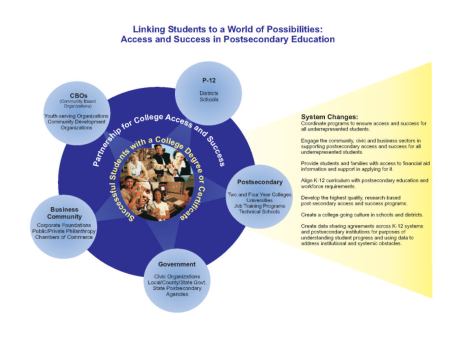Tags
616 East Lincoln Avenue, Academy for Educational Development, AED, Budgets, CMU, Expendability, Exploitation, Fundraising, Job Searches, Pitt, Ponzi Schemes, The Expendables (2010)

Even in my relative youth and arrogance, back in the days where I insisted that any authority figure in my life had to refer to me as DOCTOR Collins or DR. Donald Collins, I still saw myself as an underdog. I didn’t necessarily see myself as a working-class stiff (I did sometimes, given my predoctoral background). But I definitely was not part of the elite bunch. Mark, Mike, Jennifer and so many at Carnegie Mellon, and professors like Oestreicher, Andrews, Smethurst, Chase, and Van Hall at Pitt let me know I was better, but not elite, nearly every week for my five-and-a-half years from bachelor’s to PhD. between 1991 and 1997.
I held out hope back then. Hope that the doctorate was worth the pain, the suffering, the borrowing, the betrayals, and the burnout. Hope that being three or four times as good would be more than good enough. Hope, most of all, that my flair for writing with imagination and purpose would translate into success, prosperity, vindication, even healing and renewal, as I took my degree and my skill sets into the worlds I’ve inhabited now for a quarter-century.
Who was I kidding? I was probably the least well-connected person I knew going into college in 1987. With the partially bombed-out bridge I crossed to earn my doctorate at the end of 1996, I was lucky to have any connections to work with in finding any work at all. I discovered in a matter of weeks in 1997 my connections were enough to get into the door at one institution after another, but not enough to secure full-time work in academia.
I had felt expendable before. Graduate school and living at 616 with an abusive idiot stepfather and a patriarchal mother each gave me that feeling. The two-and-a-half-year journey to find a full-time job was different, though. It was as if I was too educated for the working world, not just as a Black man, but as a 27-year-old Black man who had worked on some level since the summer of 1984.
Almost all my academic job interviews were with schools of education or Africana studies departments. Not a single history department would interview me or hire me for a job, not even as an adjunct, until 2008. As I began doing nonprofit job interviews, it was obvious no one accounted for my doctorate as part of the process, or my three years of TAing and standalone teaching experience. I had already become the job equivalent of Michael Clayton, a fixer who wasn’t really a cop or a lawyer, yet had the expert skill sets of both. Only, substitute the words “professor” and “nonprofit administrator” for “cop” and “lawyer” here.
My expendability became even more apparent as I found myself in the big-time nonprofit world working at the now defunct Academy for Educational Development (AED, now FHI 360). It was here I learned the full nature of how much I could be a misfit within an organization. At my second job within the organization, as a senior program officer and deputy director of Partnerships for College Access and Success, my last two years I was in charge of managing the annual $1.3 million-budget for the national initiative.
And that’s when I learned why we never seemed to have enough money to manage the project or pay me more than $75 or $80K for doing so. The senior members of AED — the CEO, executive vice presidents, and senior vice presidents — skimmed one percent off the top of all grants passing through the organization. Mind you, individual senior officers who oversaw our unit already billed more than some of their hours to a project they never actually managed (the Denise Borders’ and Sandra Lauffers’ of that world). The project was just a carcass, and these stinky-ass vultures often fed off the remains. These senior folk frequently made anywhere from $200K to $400K, and the CEO Steve Moseley made over $700,000.
To hide this tremendous amount of overhead (about 35 or 40 percent of the total budget), I had to make up three budget spreadsheets. One for the actual cost of salaries, utilities, travel, and the AED Ponzi scheme, another for the private foundation world (where we manipulated the data to get the overhead to be only 15 or 20 percent of the budget). A third spreadsheet was for the annual audit to satisfy USAID and the feds. The last two budgets hid the “rainy day” fund for AED’s 52 senior officers.
It was just disgusting. I spent so much time meeting with foundation officers, writing grant proposals, fielding offers, and looking for a less stressful job in 2006 and 2007. We would turn down money because it wasn’t enough to satisfy the vultures or to keep everyone employed, like $100,000 from Carnegie Corporation, another $200,000 elsewhere.
Meanwhile, when I finally did get burned out at the end of 2007 and submitted my resignation, it was just three months ahead of probably being partially laid off anyway. I didn’t have it in me to spend the next three or six months groveling to every vice president or senior vice president in the organization about my work, hoping to pick up enough hours to keep pace with my salary. I certainly didn’t have it in me to explain for the 1,000th time why I didn’t spend two years in Mozambique as part of the Peace Corps digging wells, learning the local Portuguese, or putting up malaria nests. All to show I was one of them, privileged enough to see what lack of socioeconomic and racial privilege looked like in distant parts of the world. I was never one of them, because I lived this contrast every day growing up in and around the Big Apple.
My Black ass was expendable. My doctorate really meant nothing in the face of this work. And, I was approaching 40, meaning that others would assume I was too old to do this work and learn anyway. I was most definitely expendable by February 2008.
But, so was every AED Ponzi schemer by their ludicrously lazy, racist, and elitist standards. Once USAID became aware of the organization’s shenanigans at the end of 2010, they suspended AED’s $600-million worth of contracts, and then canceled them or moved those contracts to other organizations. They killed the beast, finding my former bosses expendable, too.
Today, I work in a world where everyone truly is expendable. It doesn’t matter if it’s American University, University of Maryland Global Campus, or if I freelance with Al Jazeera, The Washington Post, or Salon. Heck, if I don’t insist on it, these spaces and places won’t even get my name right. Forget about paying me a fair wage or having time off. You can bet, though, that the heads of every organization I do work for now has their own golden parachute, their own Ponzi method for maintaining their lavish material narcissism. It is so typically American that I could stand in the Namib desert and smell the shit blowing inland from the Atlantic Ocean.



![Hammer & Sickle & Pitt Flag [symbolic of Pitt's history department], December 13, 2012. (Donald Earl Collins).](https://donaldearlcollins.com/wp-content/uploads/2012/12/hammersicklepitt.jpg?w=300)
















